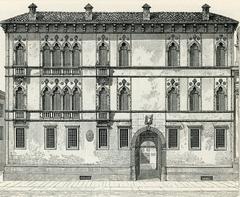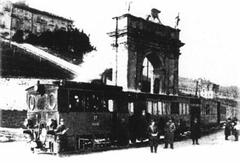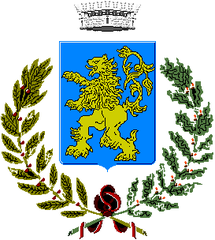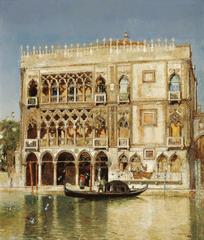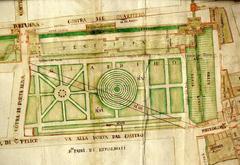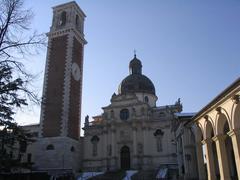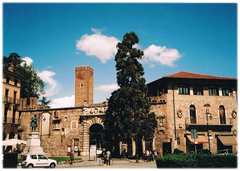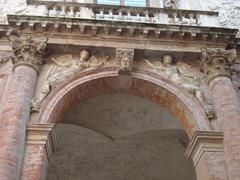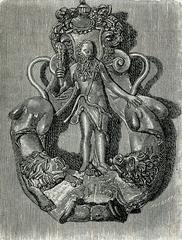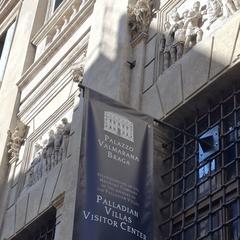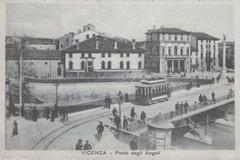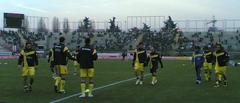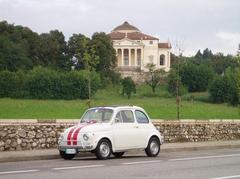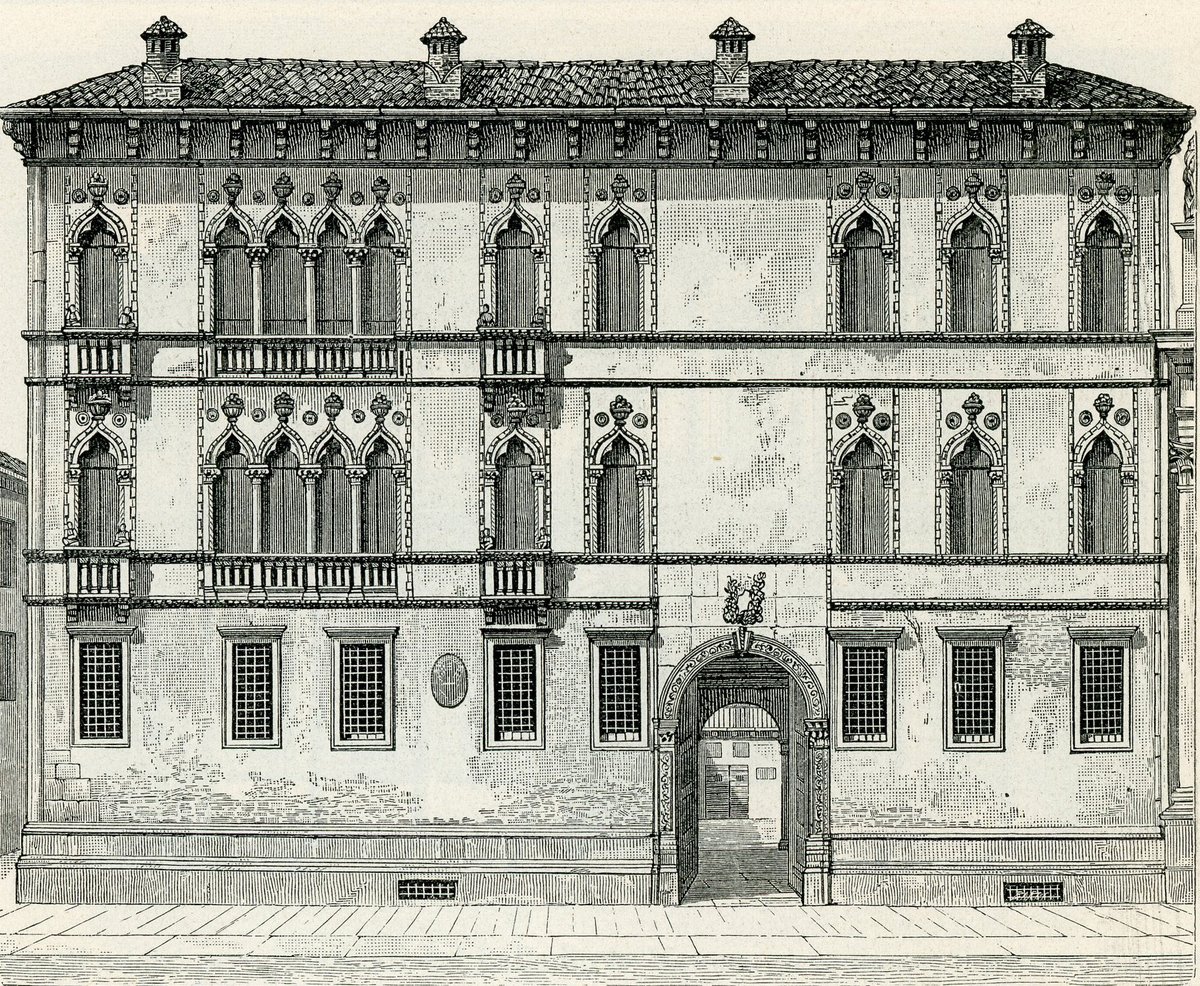
Palazzo Thiene Visiting Hours, Tickets, and Historical Sites in Vicenza
Date: 01/08/2024
Introduction
Nestled in the historic city of Vicenza, Italy, Palazzo Thiene stands as a magnificent testament to the grandeur of Renaissance architecture. This remarkable palace, originally commissioned in 1490 by Lodovico Thiene and later redesigned by renowned architects Giulio Romano and Andrea Palladio, showcases an exquisite blend of Gothic and Renaissance elements (Wikipedia). Palazzo Thiene’s rich history and architectural significance have earned it a place on the UNESCO World Heritage List, recognizing its exceptional cultural and historical value (Sygic Travel). This comprehensive guide aims to provide visitors with all the essential information needed to explore this Renaissance marvel, including visiting hours, ticket details, guided tours, and travel tips. Whether you’re an architecture enthusiast, a history buff, or simply a curious traveler, Palazzo Thiene offers a unique window into the opulence and artistic heritage of the Italian Renaissance.
Table of Contents
- Introduction
- History of Palazzo Thiene
- Visitor Information: Palazzo Thiene Visiting Hours, Tickets, and More
- Architectural Significance
- Cultural and Historical Importance
- UNESCO World Heritage Site
- Visitor Experience
- FAQ
- Conclusion
- References
History of Palazzo Thiene: A Renaissance Marvel in Vicenza
Origins and Early Construction
Palazzo Thiene, located in Vicenza, northern Italy, is a remarkable example of Renaissance architecture. The original Gothic palace was commissioned by Lodovico Thiene to Lorenzo da Bologna in 1490. The East front was constructed with bricks squared by angular lesenes worked at “diamond edge,” featuring a portal by Tommaso da Lugano and a triple window (trifora) made in rose marble (Wikipedia).
The Thiene Brothers and the Grandiose Project
In October 1542, Marcantonio and Adriano Thiene embarked on an ambitious project to remodel their 15th-century family palace. The redesign aimed to create a grandiose structure occupying an entire city block of 54 x 62 meters, facing Vicenza’s principal artery, today’s Corso Palladio (Wikipedia). The initial design was likely provided by Giulio Romano, who visited Vicenza in December 1542 as a consultant on the loggias for the Basilica (Finestre sull’Arte).
Andrea Palladio’s Involvement
Andrea Palladio, a prominent Renaissance architect, took over the project in 1544 after Giulio Romano’s death in 1546. Palladio’s involvement marked a significant shift in the design and construction of Palazzo Thiene. His influence is evident in the harmonious proportions and classical elements that characterize the palace’s façade and interior (Britannica).
Construction Progress and Challenges
Construction of Palazzo Thiene proceeded slowly, with significant milestones marked by inscriptions on the building. The external façade bears the date 1556, while the courtyard is inscribed with the date 1558. The project faced several challenges, including the death of Adriano Thiene in 1552 and the shifting family interests to Ferrara after Marcantonio’s son Giulio became the marchese of Scandiano (Wikipedia).
Partial Realization of the Project
Despite the grandiose vision, only a small portion of the original project was ever realized. The ambitious scale of the palace likely faced resistance from the Venetians and other Vicentine nobles, who would not have accepted such a grand private enclave in the city’s center (Wikipedia). The realized sections of the palace, however, still stand as a testament to the architectural prowess of Palladio and the opulence of the Thiene family.
Later Developments and Ownership
In 1835, Palazzo Thiene was acquired by Lelio Bonin Longare, marking a new chapter in the palace’s history (Wikipedia). The palace continued to serve various functions, including as the headquarters of Banca Popolare di Vicenza. In 1994, Palazzo Thiene was included in the “Vicenza, city of Palladio” World Heritage Site by UNESCO. The site was renamed “City of Vicenza and the Palladian Villas of the Veneto” in 1996, expanding to include outlying villas such as the Thiene brothers’ country home, Villa Thiene (Sygic Travel).
Recent Acquisition by the City of Vicenza
On September 6, 2021, the City of Vicenza officially acquired Palazzo Thiene. This acquisition marked the culmination of a process that began with a deed signed on June 10, 2021. The city and Immobiliare Stampa signed the deed declaring the fulfillment of a condition precedent, transferring ownership to the city. Vicenza Mayor Francesco Rucco and city council representatives symbolically opened the doors of Palazzo Thiene, now permanently owned by the city (Finestre sull’Arte).
Visitor Information: Palazzo Thiene Visiting Hours, Tickets, and More
Visiting Hours
Palazzo Thiene is open to visitors from Tuesday to Sunday, with visiting hours typically from 10:00 AM to 6:00 PM. It is advisable to check the official website or contact the visitor center for the most up-to-date visiting hours and any special closures.
Tickets
Tickets for Palazzo Thiene can be purchased at the entrance or online through the official website. General admission tickets typically cost around €10, with discounts available for students, seniors, and groups. Free entry is often available for children under a certain age and on specific days throughout the year.
Guided Tours
Guided tours are available and highly recommended for those who wish to gain a deeper understanding of the palace’s history, architecture, and cultural significance. Tours are usually available in multiple languages and can be booked in advance.
Special Events and Exhibitions
Palazzo Thiene frequently hosts cultural events, exhibitions, and temporary displays, providing visitors with a dynamic and enriching experience. Check the official website or visitor center for current and upcoming events.
Nearby Attractions
Vicenza is rich in historical and cultural attractions. Nearby sites worth visiting include the Basilica Palladiana, Teatro Olimpico, and Villa La Rotonda. Exploring these sites can provide a broader context of Palladio’s work and the Renaissance period.
Travel Tips
- Accessibility: Palazzo Thiene is equipped to accommodate visitors with disabilities. It is advisable to contact the visitor center ahead of your visit for specific accessibility arrangements.
- Photography: Photography is usually allowed in most areas of the palace, but flash photography and tripods may be restricted. Always check the guidelines.
- Best Time to Visit: The palace is less crowded during weekdays and early mornings. Visiting during off-peak hours can enhance your experience.
- Public Transport: Vicenza is well-connected by public transport. The palace is within walking distance from the main train station and several bus stops.
Architectural Significance
Palazzo Thiene is a striking example of Renaissance architecture, showcasing the collaborative genius of Giulio Romano and Andrea Palladio. The palace’s design features a combination of rectangular rooms and small octagons, reminiscent of Roman public baths. The symmetrical layout and classical elements reflect Palladio’s architectural philosophy (Britannica).
Cultural and Historical Importance
Palazzo Thiene is not only an architectural masterpiece but also a significant cultural landmark. The palace’s interiors are adorned with intricate decorations, frescoes, stuccoes, and artworks from the Renaissance period. These elements provide a glimpse into the opulent lifestyle of the Italian aristocracy during the Renaissance (Trek Zone).
UNESCO World Heritage Site
Since 1994, Palazzo Thiene has been part of the UNESCO World Heritage Site “City of Vicenza and the Palladian Villas of the Veneto.” This designation recognizes the palace’s exceptional cultural and historical value. The inclusion in the World Heritage Site underscores the importance of preserving and promoting the architectural and artistic heritage of Vicenza and the Veneto region (Wikipedia).
Visitor Experience
Today, Palazzo Thiene serves as a historic headquarters for various cultural events and exhibitions. Visitors can explore the palace’s grand halls and intricately decorated rooms, each telling a story of the past through its unique decorations and furnishings. Guided tours are available, offering an in-depth look at the palace’s history and architectural significance (Vicenza è).
FAQ
What are the visiting hours for Palazzo Thiene?
Palazzo Thiene is open from Tuesday to Sunday, typically from 10:00 AM to 6:00 PM. Check the official website for current visiting hours.
How much do tickets cost for Palazzo Thiene?
General admission tickets are around €10, with discounts for students, seniors, and groups. Free entry is available for children under certain ages and on specific days.
Are guided tours available?
Yes, guided tours are available and recommended to gain deeper insights into the palace’s history and architecture.
What are some nearby attractions?
Nearby attractions include the Basilica Palladiana, Teatro Olimpico, and Villa La Rotonda.
Conclusion
Palazzo Thiene stands as a testament to the grandeur and elegance of Renaissance architecture. Its rich history, architectural significance, and cultural importance make it a must-visit destination for anyone interested in the artistic and architectural heritage of Vicenza and the Veneto region. The palace’s inclusion in the UNESCO World Heritage Site further highlights its exceptional value and the need for its preservation for future generations.
